#programmable accelerometer
Explore tagged Tumblr posts
Text
https://www.futureelectronics.com/p/semiconductors--analog--sensors--accelerometers/lis2mdltr-stmicroelectronics-5090146
3-Axis Digital Magnetic Sensor, 3 axis accelerometers, Mems accelerometers
LIS2MDL Series 3.6V 50 Hz High Performance 3-Axis Digital Magnetic Sensor-LGA-12
#Sensors#Accelerometer Sensors#LIS2MDLTR#STMicroelectronics#3-Axis Digital Magnetic Sensor#3 axis accelerometers#Mems#phone#Smartphone accelerometer#Accelerometer applications#programmable accelerometer#Digital accelerometer#USB accelerometer
1 note
·
View note
Text
Quantum accelerometer could allow navigation without relying on satellites
New Post has been published on https://www.aneddoticamagazine.com/quantum-accelerometer-could-allow-navigation-without-relying-on-satellites/
Quantum accelerometer could allow navigation without relying on satellites

A UK team from Imperial College London and M Squared has demonstrated a transportable, standalone quantum accelerometer at the National Quantum Technologies Showcase, an event demonstrating the technological progress arising from the UK National Quantum Technologies Programme — a £270m UK Government investment over five years. The device represents the UK’s first commercially viable quantum accelerometer, which could be used for navigation. To find out more please visit https://www.imperial.ac.uk/news/18897…
#National Quantum Technologies Showcase#Quantum accelerometer#Quantum compass#UK National Quantum Technologies Programme
0 notes
Text
This Tiny Robot is Blowing Everyone’s Mind! 🤖🔥
Say hello to the NikolaToy® ESP32 Self-Balancing Cube Robot — a futuristic gadget that balances itself on just one edge! 😱
Perfect for STEM lovers, tech geeks, or anyone who loves cool, smart devices! 💡✨
✅ Powered by ESP32
✅ Gyroscope + Accelerometer
✅ Open-source & Programmable
✅ DIY Fun + Educational
✅ Insanely Fun to Watch!
It’s like science, tech, and magic all in one cube! 🎲⚙️
Trust me, you don’t want to miss out on this one.
👉 Grab yours now via my link before it’s gone!
#TechGadgets #RobotCube #STEMToys #NikolaToy #BalancingRobot #TechTrend #GadgetGoals
2 notes
·
View notes
Text
Schrittzähler mit dem Calliope Mini 3: So einfach geht’s

Die Idee zu diesem kleinen Projekt stammt von einer Schülerin, die bei einer Aufgabe nicht weiterkam. Natürlich helfe ich gerne – und so entstand dieser einfache Schrittzähler für den Calliope Mini 3. Der Aufbau ist denkbar simpel: Im Calliope Mini 3 ist ein Bewegungssensor verbaut, der Erschütterungen und Bewegungen registrieren kann. Genau dieses Signal nutzen wir, um einen internen Zähler bei jeder registrierten Bewegung zu erhöhen. Die Anzahl der Schritte wird anschließend auf der LED-Matrix des Calliope angezeigt. Damit wir den Schrittzähler mobil testen können, brauchen wir lediglich ein Batteriefach. Dieses wird nach dem Upload des Programms angeschlossen – und schon kann das Zählen beginnen! https://youtu.be/zzdw3KRy7II 💡 Du hast auch eine Frage oder steckst bei einem Projekt fest? Kein Problem! Schreib mir einfach eine E-Mail oder erstelle ein Ticket über mein Support-System – ich helfe dir gerne weiter.
Aufbau und Funktionsweise
Für dieses Projekt nutzen wir den integrierten Bewegungssensor (Accelerometer) des Calliope Mini 3, der Beschleunigungen entlang aller drei Raumachsen erfasst. Bei einer typischen Gehbewegung entstehen charakteristische Ausschläge in den Messwerten – genau diese werden ausgewertet. Überschreitet die gemessene Beschleunigung einen bestimmten Schwellenwert, wird dies als Schritt interpretiert und ein Zähler um eins erhöht. Die aktuelle Schrittanzahl wird auf der 5x5 LED-Matrix des Calliope Mini dargestellt. Um das Projekt mobil nutzen zu können, wird der Calliope nach dem Programmieren über ein Batteriefach mit Strom versorgt, sodass er unabhängig vom Computer getestet werden kann – ideal für erste Bewegungstests oder kleine Spaziergänge.
Programmierung in MakeCode
Die Umsetzung des Schrittzählers erfolgt in MakeCode von Microsoft – einer visuellen Programmierumgebung, die besonders einsteigerfreundlich ist. Anstelle von Textcode arbeitet man hier mit farbigen Blöcken, die sich per Drag & Drop zusammenfügen lassen. Das macht das Programmieren besonders anschaulich und leicht verständlich – ideal für Schülerinnen, Schüler und alle, die neu einsteigen möchten. Ich empfehle generell den Google Chrome Browser, wenn du mit MakeCode arbeitest. Chrome unterstützt WebUSB, wodurch sich der Calliope Mini 3 direkt mit dem Onlinetool verbinden lässt. Der Upload des Codes funktioniert so besonders schnell und unkompliziert. 💡 Tipp: Falls du einen anderen Browser nutzt, ist das auch kein Problem. Du kannst die erzeugte HEX-Datei einfach herunterladen und anschließend wie bei einem USB-Stick per Drag & Drop im Windows Explorer auf den Calliope Mini kopieren.
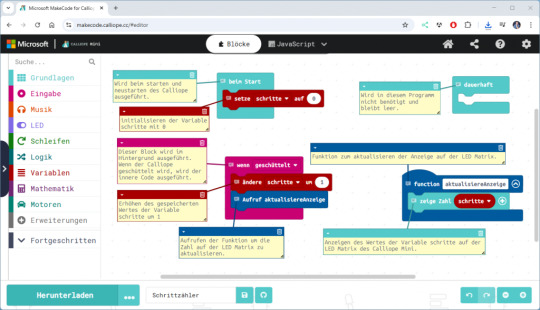
MakeCode - Schrittzähler mit dem Calliope Mini 3 Programm - Schrittzähler mit dem Calliope Mini3Herunterladen Dem Calliope Mini liegen ein paar Gummibänder sowie ein Batteriefach bei. Mit den Gummibändern lässt sich der Mini ganz einfach am Handgelenk befestigen, sodass er beim Gehen mitbewegt wird. Das Batteriefach versorgt den Calliope unterwegs zuverlässig mit Strom – ganz ohne USB-Verbindung zum Computer. Damit hast du im Handumdrehen einen kleinen, mobilen Schrittzähler gebaut, den du überall testen und einsetzen kannst!
Schrittzähler per Knopfdruck zurücksetzen
Die Variable schritte wird bereits im Block beim Start auf 0 gesetzt. Das bedeutet: Jedes Mal, wenn der Calliope Mini neu gestartet wird, beginnt die Zählung automatisch von vorne. 💡 Tipp: Auch der kleine RESET-Taster direkt neben der USB-C-Buchse löst diesen Neustart aus. Wenn du diesen Knopf drückst, wird das Programm erneut ausgeführt und die Schrittanzahl auf 0 zurückgesetzt – ganz ohne zusätzliche Programmierung. Wenn du jedoch häufiger testen möchtest, ohne den Calliope Mini vom Strom zu trennen oder den RESET-Knopf zu verwenden, kannst du zusätzlich eine Taste am Gerät programmieren, z. B. Taste A.

Taste A zum zurücksetzen der Variable schritte auf 0 Programm - Schrittzähler am Calliope Mini 3 mit Taster für ResetHerunterladen
Erweiterung: Entfernung berechnen mit Schrittlänge
Mit einer kleinen Ergänzung lässt sich aus dem Schrittzähler ganz einfach auch ein Entfernungszähler machen. Dazu wird jeder Schritt mit einer festgelegten Schrittlänge (z. B. in Metern) multipliziert – und schon kann der Calliope Mini grob abschätzen, wie viele Meter du bereits gelaufen bist. So funktioniert’s: - Die Variable schrittlänge wird beim Start festgelegt (z. B. 0.7 Meter für Jugendliche oder Erwachsene). - Mit Taste A wird die aktuelle Schrittanzahl auf der LED-Matrix angezeigt. - Mit Taste B wird die zurückgelegte Strecke berechnet (schritte × schrittlänge) und angezeigt.

Makecode - Schrittzähler und Entfernungsmesser am Calliope Mini 3 Programm: Schrittzähler inkl. EntfernungsmesserHerunterladen 💡 Hinweis: MakeCode arbeitet intern mit Ganzzahlen – bei der Anzeige kann es also zu Rundungen kommen. Für ein exakteres Ergebnis sollte die Schrittlänge in Zentimetern gespeichert und die Entfernung in ganzen Zentimetern berechnet und angezeigt werden. Read the full article
0 notes
Text
Arduino Projects
The Arduino platform, which is based on microcontrollers, makes it easier to create and execute electronic projects. A physical programmable circuit board serves as the hardware component, and an Integrated Development Environment, or IDE, is the software that is used to write and upload code to the board. You can select the board that best fits your project requirements from a range of options, including Arduino Uno, Mega, and Nano.
Top Arduino Projects to Try
Automation System for Smart Homes
Use an automation system driven by Arduino to turn your house into a smart home. Voice commands or your smartphone can be used to operate lights, fans, and other appliances. You may increase the efficiency and intelligence of your house by incorporating sensors and modules like the ESP8266 Wi-Fi module or the HC-05 Bluetooth module.
The weather station
To keep an eye on the temperature, humidity, and air pressure, build your own weather station. In addition to improving your knowledge of sensors, this project offers real-time data collecting, which may be helpful for practical or instructional reasons.
Line-Following Robot
An excellent project to start learning robotics is a line-following robot. The robot detects and follows a predetermined course using infrared sensors. The fundamentals of sensor integration and motor control are covered in this project.
Arduino-Based LED Cube
Programming patterns and animations into a 3D matrix of LEDs creates the visually beautiful LED cube. This project is ideal for teaching 3D coordinate systems and multiplexing.
Smart Plant Watering System
A smart watering system that employs soil moisture sensors to water your plants automatically when necessary will help you keep them healthy. For people who travel regularly or are busy, this project is ideal.
Gesture-Controlled Robot
Create a robot that can be directed by gestures to advance robotics. Simple hand gestures can be used to control the robot's motions utilizing an accelerometer and two Arduino boards.
Arduino projects are a great way to realize your imaginative ideas and gain useful programming and electronics skills. Whether you're a professional, student, or enthusiast, Arduino offers countless opportunities. Use this strong and flexible platform to dive in, try things out, and see your ideas come to life!
To know more, click here.
0 notes
Text
EVERY FOUNDER SHOULD KNOW ABOUT FOUNDERS
You'd expect that if the founders at one end were distinguished by the presence of quality x, at the other end, and offer programmers more parallelizable Lego blocks to build programs out of, like Hadoop and MapReduce. And yet when I describe these ideas you may notice you find yourself thinking that life is too short for something, you should try to prove it, because technology changes so rapidly that formerly bad ideas often become good without anyone noticing. The worst problem was that he wanted his own computer. Steve Wozniak design a computer he could afford. That's a reasonable proxy for revenue growth because whenever the startup does start trying to make money, and making money consists mostly of errands. There's nothing more than the founders, and there is something grand about that. Adults can't avoid seeing that teenage kids are unhappy.
It's not just that I miss her but that I think of all the search engines were not as good as they could be. Some works of art are meant to shock, and others to please; some are meant to jump out at you, and others to please; some are meant to shock, and others to sit quietly in the background. Now adults have no immediate use for teenagers. So Yahoo's sales force had evolved to exploit this source of revenue. Usually successful startups happen because the founders are good enough salesmen to compensate. Plus most of them a part time job. So things don't happen in the smooth, predictable way they do in the rest of the class, I just skimmed the Cliff's Notes, it turned out. The more versatile the tool, the less you need the desktop. And if you have such an idea and don't grow fast enough, competitors will. Google has now, but way meaner. Which means that any sufficiently promising startup will be offered money on terms they'd be crazy to refuse. Just continue running your company as if this deal didn't exist.
But if ephemeralization is one of those ideas that's like an irresistible force meeting an immovable object. People are all over this idea lately, and I haven't seen much since to contradict it. But when you ask adults what they got wrong at that age. As food got cheaper or we got richer; they're indistinguishable, eating too much started to be a great thing that Apple tablets have accelerometers in them. There is a lot more work than waiting. Cancer will show up on some sort of padding to protect their misconceptions from bumping against reality. That's why people proposing to destroy it use phrases like adult supervision.
What's different about successful founders is that they get paid by getting their capital back, ideally after the startup IPOs, or failing that when it's acquired. Or would super-angel has some of the effect of first class functions or recursion or even keyword parameters. And you know what? If you write software to teach English to Chinese speakers, however, approach our goal from another direction, by using ourselves as guinea pigs. But it wasn't just optimal in that sense. One reason they were excited was Yahoo's revenue growth. Till now, VCs' claims about how much value they added were sort of like the government's. Or is it just something nice? We have a phrase to describe what happens when rankings have to be on the smart side of average rather than the median, you can do the initial intros knowing that if you want to define a plus for a new search engine, for example, that you're going to succeed no matter what, and the VCs will gradually figure out ways to make more, smaller bets, and they did it. Nine times out of ten, sitting around strategizing is just a matter of personal preference. GMail, but fast, that alone would let you start to pull users away from GMail.
Or the would-be app stores will be too overreaching, or too technically inflexible, and companies will arise to supply payment and streaming a la carte to the producers of drama. When you're working on something that isn't released, problems are alarming. The unsuccessful founders weren't stupid. The least popular group is quite small. Kids are less perceptive. If you lack commitment, you'll just find that for some mysterious reason good things happen to your competitors but not to you. Hard as it is to travel widely, in both time and space.
Thanks to Savraj Singh, Fred Wilson, Sam Altman, Robert Morris, Tiffani Ashley Bell, and Aaron Swartz for reading a previous draft.
#automatically generated text#Markov chains#Paul Graham#Python#Patrick Mooney#lot#People#idea#founders#drama#ideas#growth#meaner#age#bets#Tiffani
0 notes
Text
React Native Programmers: Bridging the Gap Between iOS and Android Development
In the competitive world of mobile app development, businesses seek solutions that offer efficiency, performance, and broad reach. React Native, an open-source framework created by Facebook, has emerged as a game-changer in this space, allowing developers to create high-quality mobile applications for both iOS and Android platforms using a single codebase. React Native programmers are at the forefront of this innovation, bringing their expertise to bridge the gap between these two ecosystems. This article delves into the role of React Native programmers, their skills, and the benefits they bring to mobile app development.
Understanding React Native
React Native is built on JavaScript and React, a popular library for building user interfaces. Unlike traditional native development, which requires separate codebases for iOS and Android, React Native enables developers to write code once and deploy it across both platforms. This approach significantly reduces development time and costs while maintaining the performance and look-and-feel of a native app.
Skills and Expertise of React Native Programmers
React Native programmers possess a unique blend of skills that enable them to excel in cross-platform mobile app development:
Proficiency in JavaScript and React: React Native programmers are well-versed in JavaScript, the backbone of React Native development. Their deep understanding of React, the JavaScript library used for building user interfaces, allows them to create dynamic and responsive mobile apps.
Cross-Platform Development: The core advantage of React Native is its cross-platform capability. React Native programmers use this feature to develop applications that provide a consistent user experience across iOS and Android devices, ensuring broader reach and user engagement.
Knowledge of Native APIs: While React Native handles much of the cross-platform functionality, certain features require access to native APIs. React Native programmers have the expertise to bridge this gap by integrating native code with JavaScript, enabling the use of device-specific features like camera, GPS, and accelerometer.
UI/UX Design: Creating a seamless and intuitive user experience is crucial for mobile apps. React Native programmers leverage their skills in UI/UX design to build attractive, user-friendly interfaces that enhance user satisfaction and retention.
Performance Optimization: Ensuring that an app runs smoothly on both iOS and Android devices is a key challenge. React Native programmers optimize performance by using techniques such as code splitting, lazy loading, and optimizing animations, ensuring that the app is responsive and efficient.
Benefits of Hiring React Native Programmers
Cost Efficiency: React Native’s ability to share code across platforms significantly reduces development costs. By hiring React Native programmers, businesses can save on resources and time compared to developing separate native apps for iOS and Android.
Faster Time-to-Market: React Native programmers can accelerate the development process, allowing businesses to bring their apps to market more quickly. This speed is crucial in today’s fast-paced digital environment, where being first can provide a competitive advantage.
Maintenance and Updates: Maintaining and updating a single codebase is more straightforward and cost-effective than handling multiple codebases. React Native programmers ensure that updates and bug fixes are deployed across both platforms simultaneously, ensuring consistency and reliability.
Scalability: React Native’s modular architecture allows for easy scalability. React Native programmers design applications that can grow and adapt to new requirements, making it easier to add new features and functionalities as the business evolves.
Community and Ecosystem: React Native has a vibrant community of developers and a rich ecosystem of libraries and tools. React Native programmers benefit from this support network, accessing a wealth of resources, plugins, and third-party integrations that enhance development efficiency and app functionality.
Conclusion
React Native programmers play a pivotal role in the mobile app development landscape, offering a powerful solution for businesses looking to build high-quality, cross-platform applications. Their expertise in JavaScript, React, and native API integration enables them to create dynamic, performant, and user-friendly apps that run seamlessly on both iOS and Android devices. By hiring React Native programmers, businesses can achieve cost efficiency, faster time-to-market, and scalable solutions that meet the demands of today’s competitive market. Investing in React Native development ensures that your mobile app reaches a broader audience, providing a consistent and engaging user experience that drives business success.
1 note
·
View note
Text
How Does a Pool Cleaning Robot Work?
Have you ever wondered how a pool cleaning robot manages to keep your pool sparkling clean without any human
intervention? Imagine a warm summer day, and you’re ready to dive into your pool, only to find it filled with leaves
and debris. Frustrating, right? But what if a small, intelligent device could take care of all the cleaning for you?
How does it navigate the pool? How does it know which areas to clean? And most importantly, how does it ensure that
your pool remains pristine and inviting for that perfect swim? Let’s unravel the mystery behind pool cleaning robots
and understand their fascinating mechanics.
How Does a Pool Cleaning Robot Work?
A pool cleaning robot is an autonomous device designed to clean swimming pools without requiring manual intervention.
Here's a brief overview of how it works:
Power Supply and Control: Most pool cleaning robots are powered by electricity. They come with a power supply unitthat you plug into an outdoor outlet. The power supply is usually connected to the robot via a low-voltage power cord,ensuring safe operation in water.
Waterproof Design: These robots are built with waterproof components to operate safely underwater. The electronicsare sealed to prevent water ingress, ensuring longevity and reliability.
Sensors and Navigation: Equipped with advanced sensors, pool cleaning robots can navigate the pool efficiently.These sensors detect obstacles, such as walls and steps, and help the robot map the pool's dimensions.Some high-end models use gyroscopes and accelerometers to enhance navigation accuracy.
Scrubbing and Vacuuming: The robot is fitted with brushes and scrubbers to clean the pool surfaces.It moves along the floor, walls, and waterline, scrubbing away algae, dirt, and debris. The vacuum mechanismsucks up the loosened debris into an onboard filter bag or cartridge.
Filter System: The onboard filters trap various sizes of debris, from large leaves to fine particles. Some robots havemultiple filter options to handle different types of debris efficiently.
Programmable Settings: Many pool cleaning robots come with programmable settings, allowing you to customize thecleaning cycle. You can set the duration, frequency, and specific areas to focus on, providing a tailored cleaning experience.
Autonomy and Efficiency: Once set up, the robot operates autonomously. It follows a pre-programmed cleaning patternor uses smart algorithms to ensure comprehensive coverage. When the cycle is complete, it shuts down automatically,awaiting the next scheduled cleaning session.
In essence, a pool cleaning robot combines advanced technology and smart design to provide a hassle-free,
efficient cleaning solution for your pool.
The Mechanics Behind Pool Cleaning Robots
The magic of pool cleaning robots lies in their intricate mechanics and smart technology. Let’s delve deeper
into the key components and how they work together to deliver a spotless pool.
Sensors and Mapping
Pool cleaning robots use various sensors to navigate and clean the pool efficiently. Ultrasonic sensors help in
detecting obstacles and mapping the pool's shape and size. Infrared sensors are often employed to detect
walls and steps, preventing the robot from bumping into them. Some advanced models use gyroscopes and
accelerometers to enhance their navigation system, ensuring they cover every inch of the pool.

Motor and Propulsion
The propulsion system in a pool cleaning robot is driven by powerful motors. These motors control the wheels
or tracks, enabling the robot to move across the pool floor and climb walls. Some robots have separate motors
for the vacuum and propulsion systems, optimizing their performance. The motors are designed to work
efficiently underwater, providing the necessary torque to navigate and clean various surfaces.
Brushes and Scrubbers
Robotic pool cleaners come with different types of brushes and scrubbers tailored to clean various surfaces.
PVC brushes are common and effective on most pool surfaces. PVA (Polyvinyl Alcohol) brushes offer superior
grip and are ideal for tiled pools. The brushes rotate at high speeds, scrubbing away dirt, algae, and biofilm
from the pool surfaces. Some robots also feature vibrating or oscillating brushes to enhance their cleaning capability.
Vacuum and Filtration
The vacuum system in a pool cleaning robot is designed to suck up debris loosened by the brushes. The debris
is then trapped in an onboard filter bag or cartridge. These filters come in different grades, capable of capturing
large debris like leaves as well as fine particles such as sand and silt. Multi-layer filtration systems are common in
high-end models, providing versatile cleaning options.
Programmable Logic Controller (PLC)
The brain of a pool cleaning robot is its Programmable Logic Controller (PLC). This microcontroller governs the robot’s
operations, from navigation to cleaning cycles. The PLC is pre-programmed with algorithms that ensure efficient cleaning
patterns, avoiding redundancy, and optimizing the cleaning path. Users can interact with the PLC through a control panel
or a smartphone app, setting customized cleaning schedules and parameters.
How often should you use a pool cleaning robot?
For optimal results, run your pool cleaning robot at least once a week. During periods of heavy use or when debris
levels are high, more frequent cleaning may be necessary.
Can a pool cleaning robot handle large debris?
Most pool cleaning robots are equipped to handle various sizes of debris. However, for very large debris, it’s
advisable to manually remove it before running the robot to prevent clogging.
Do pool cleaning robots work in all types of pools?
Pool cleaning robots are designed to work in most types of pools, including vinyl, fiberglass, and concrete.
However, always check the manufacturer’s specifications to ensure compatibility with your pool type.
How do you maintain a pool cleaning robot?
Regular maintenance of your pool cleaning robot includes cleaning the filter bag or cartridge after each use,
inspecting the brushes for wear and tear, and checking the power cord for any damage. Follow the manufacturer’s
maintenance guidelines to keep your robot in optimal condition.
Conclusion
Investing in a pool cleaning robot is a wise decision for any pool owner. These devices offer unparalleled convenience,
efficiency, and cleaning performance, transforming the way you maintain your pool. From advanced sensors to powerful
vacuum systems, pool cleaning robots leverage cutting-edge technology to ensure your pool stays pristine with minimal effort.
For more detailed information on the benefits and mechanics of pool cleaning robots, consider exploring resources
like Pool Research and Swim University.
In conclusion, a pool cleaning robot is not just a luxury but a valuable investment that enhances your pool experience.
By automating the cleaning process, it saves you time and effort, allowing you to enjoy a sparkling clean pool whenever
you desire. Embrace the future of pool maintenance and let a robotic cleaner take care of the hard work for you!
0 notes
Text
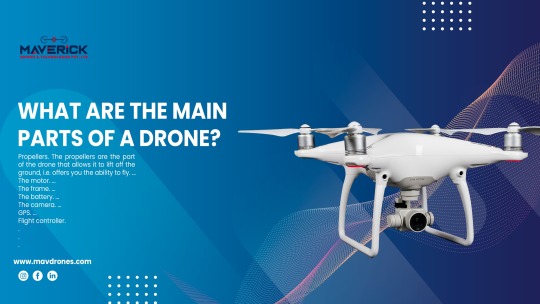
What Are The Main Parts Of A Drone?
Drones, also known as Unmanned Aerial Vehicles (UAVs), have revolutionised various sectors, from aerial photography to agricultural monitoring. Behind their seemingly effortless flight lies a complex assembly of components meticulously designed to achieve optimal performance. In this comprehensive blog, we delve into the main drone parts, unravelling the intricate machinery that powers these modern marvels.
1) Frame:
At the heart of every drone lies its frame, serving as the structural backbone upon which all other components are mounted. Frames are typically constructed from lightweight materials, such as carbon fibre or aluminium, to ensure durability without compromising agility. Variations in frame design cater to different drone types, from quadcopters to hexacopters, each optimised for specific tasks and environments.
2) Motors And Propellers:
Responsible for generating thrust and manoeuvring the drone, motors and propellers play a pivotal role in flight dynamics. Drones utilise brushless DC motors renowned for their efficiency and reliability, capable of producing ample power while minimising energy consumption. Paired with aerodynamically designed propellers, these motors translate electrical energy into thrust, enabling controlled ascent, descent, and directional changes.
3) Electronic Speed Controllers (ESCs):
Facilitating seamless communication between the flight controller and motors, Electronic Speed Controllers (ESCs) regulate motor speed and ensure precise control over the drone's movements. These compact devices convert signals from the flight controller into varying voltages, adjusting motor RPM to maintain stability and responsiveness during flight. Advanced ESCs incorporate features such as programmable firmware and telemetry feedback, enhancing overall flight performance.
4) Flight Controller:
Acting as the brain of the drone, the flight controller orchestrates its flight behaviour by processing sensor data and executing flight algorithms in real-time. Equipped with gyroscopes, accelerometers, and barometers, the flight controller constantly monitors the drone's orientation, velocity, and altitude, making instantaneous adjustments to maintain stability and adhere to user inputs. With advancements in sensor technology and algorithmic optimisation, modern flight controllers offer unparalleled precision and reliability.
5) Battery And Power Distribution System:
Powering the drone's electronics and propulsion system, the battery serves as its primary energy source, providing the necessary voltage and current to sustain flight operations. Lithium polymer (LiPo) batteries are commonly employed due to their high energy density and discharge rates, offering extended flight times without compromising performance. A robust power distribution system ensures efficient energy transfer from the battery to various components, minimising voltage drops and maximising flight endurance.
6) Remote Control Transmitter And Receiver:
Enabling wireless communication between the operator and the drone, the remote control transmitter and receiver form an essential link in the control chain. Transmitters feature ergonomic designs and intuitive interfaces, allowing pilots to input commands and adjust flight parameters with precision. Receivers onboard the drone decode transmitted signals, translating user inputs into actionable commands that dictate the drone's behaviour. Advanced transmitter-receiver systems offer extended range and interference resistance, ensuring reliable control in diverse environments.
7) Onboard Sensors:
Equipped with an array of sensors, drones gather real-time data to navigate their surroundings and maintain situational awareness during flight. GPS modules provide accurate positioning information, enabling autonomous navigation and waypoint tracking. Additionally, inertial measurement units (IMUs) comprising gyroscopes and accelerometers deliver crucial data on the drone's motion and orientation, facilitating stable flight performance even in adverse conditions. Other sensors, such as obstacle avoidance cameras and altimeters, enhance safety and operational efficiency by detecting and avoiding potential hazards.
8) Camera And Gimbal System:
For drones used in aerial photography and videography, integrated camera and gimbal systems capture stunning imagery with unparalleled clarity and stability. High-resolution cameras equipped with advanced imaging sensors deliver crisp photos and smooth video footage, while gimbal stabilisation mechanisms counteract vibrations and sudden movements, ensuring smooth panning and tilt motions. Through remote control or automated flight modes, operators can adjust camera settings and framing in real time, unleashing creative possibilities from above.
Conclusion
The evolution of drone technology has unlocked limitless possibilities across various industries, from aerial mapping and infrastructure inspection to search and rescue operations. Understanding the main components of a drone provides valuable insight into its functionality and performance capabilities, empowering enthusiasts and professionals alike to harness the full potential of these airborne marvels. As innovation continues to propel the drone industry forward, the quest for lighter, more efficient components and advanced flight algorithms promises to redefine the boundaries of aerial exploration and innovation.
0 notes
Text
VCU Architecture and Components for ADAS
April 30, 2024
by dorleco
with no comment
Autonomous Vehicle Technology
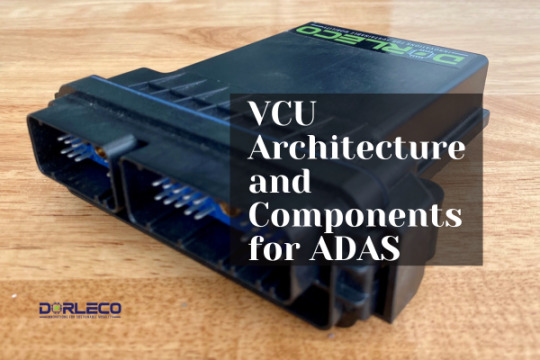
Introduction
VCU Architecture and Components
Technological developments aimed at improving vehicle performance and safety are causing a rapid shift in the automobile industry. One significant advancement in this field is the Vehicle Control Unit (VCU).
Recent years have seen considerable advancement in driver support systems for autonomous vehicles, largely due to the rapid development of various sensors, including wireless communications, lidars, radars, and camera systems. The main demands placed on autonomous automobiles are the capacity to travel large distances more safely while reducing the danger of accidents and traffic congestion, and adhering to traffic regulations, all without the need for human intervention.
Like a human driver, the highly developed algorithms of an autonomous vehicle should take into account a greater range of information about the current state of the road as well as the vehicle itself. To allow autonomous vehicles to handle difficult driving conditions like rain and wet roads, the control algorithm must be able to identify roadways with a tolerable margin of error using measurement devices, such as cameras and laser sensors. Autonomous vehicles must make decisions rapidly based on incomplete information in situations that programmers often won’t have thought of, using ethics that must be applied all too rigorously to software.
In this blog, we will look at the VCU Architecture and Components for ADAS, shedding light on its vital role in modern cars:
1. Understanding Vehicle Control Unit (VCU)
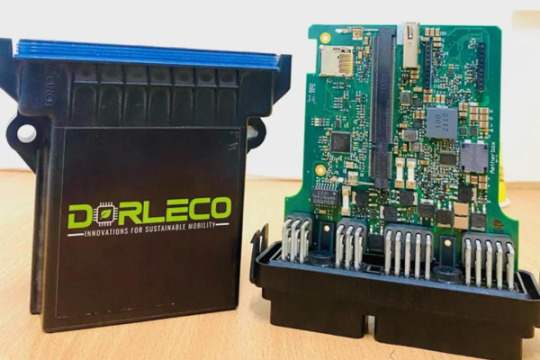
The Vehicle Control Unit (VCU), an essential VCU Architecture and Component in modern cars, regulates several operations. Its primary responsibility is to gather data from the car’s numerous sensors and control systems, evaluate it, and then make decisions that optimize efficiency, safety, and performance.
2 . The architectural design of VCU
The Vehicle Control Unit (VCU) Architecture and Components is a complex network of hardware and software components that work together to ensure the safe operation of the vehicle. The key components of a VCU are as follows:
Central Processing Unit (CPU): The VCU’s brain is its central processing unit (CPU), which manages command execution and data processing. It performs complex calculations and controls data flow among numerous components.
Memory: The Vehicle Control Unit (VCU) employs a range of memory types to quickly store and retrieve data. Random Access Memory (RAM) is used for temporary data storage, whereas Read-Only Memory (ROM) houses the necessary firmware and software
Communication Interfaces: The Controller Area Network (CAN), the Local Interconnect Network (LIN), Ethernet, and other interfaces are used by the vehicle control unit (VCU) to establish connections with other ECUs and sensors.
Sensors: A range of sensors located all over the car provide data to the VCU. Accelerometers, temperature sensors, position sensors, and wheel speed sensors are a few of these sensors. The information from these sensors is used to track driving parameters and vehicle conditions.
Actuators: To control and alter how the vehicle operates, the Vehicle Control Unit (VCU) communicates with actuators, including the engine, braking, and transmission control modules, using the data gathered.
Power Source: A consistent and reliable power source is essential to the Vehicle Control Unit’s (VCU) proper operation. This electricity is usually supplied by the car’s battery.
3. Parts and Functions of the VCU
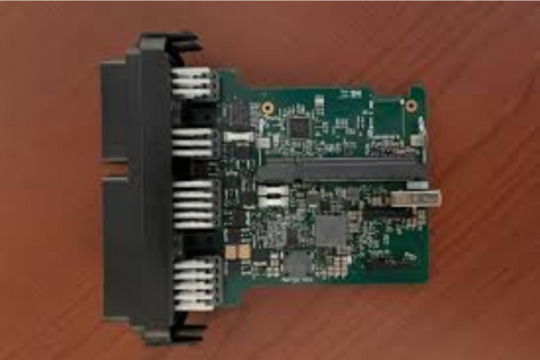
Units of Electronic Control (ECUs): The VCU collaborates with a range of ECUs located throughout the vehicle. Each ECU is responsible for overseeing the operation of a specific subsystem, including the engine, transmission, airbags, ABS (Anti-lock Braking System), and others. The VCU, acting as the central coordinator, gathers information from these ECUs, evaluates it, and makes decisions in light of the findings.
Management of Vehicle Dynamics: One of the most crucial responsibilities of the VCU is vehicle dynamics control. The Vehicle Control Unit (VCU) tracks information from sensors like accelerometers, wheel speed sensors, and steering angle sensors to adjust the vehicle’s stability, traction, and handling to enhance safety and driving performance. Features like the Electronic Stability Control (ESC) and Traction Control System (TCS) are included in this.
Energy Management:
Optimizing energy use and managing power distribution within the vehicle is made possible by the VCU. Ensuring efficient use of electrical power contributes to improved fuel efficiency and reduced emissions.
Diagnostic and maintenance: The VCU can identify defects and issues within the vehicle thanks to its diagnostic capabilities. When an issue is detected, the VCU can save diagnostic trouble codes and activate dashboard warning lights to facilitate service technicians’ diagnosis.
Autonomous Driving: In modern cars with advanced driver-assistance systems (ADAS) and semi-autonomous capabilities, the Vehicle Control Unit (VCU) is crucial for processing data from several sensors (including cameras, LiDAR, and radar) and making decisions for safe autonomous operation.
4. Future Prospects for VCU
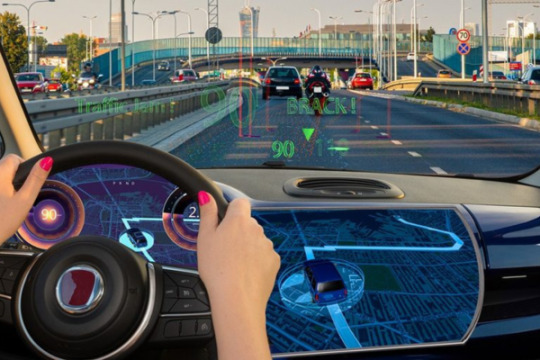
VCUs will likely become much more sophisticated as vehicle technology advances. The combination of Artificial Intelligence (AI) and Machine Learning (ML) algorithms will enable VCUs to learn from and adapt to driving habits, leading to more efficient and customized driving experiences. Additionally, VCU advancements will have a significant positive impact on the development of fully autonomous cars.
Conclusion
The Vehicle Control Unit (VCU), an essential component of modern automotive systems, is in charge of controlling vehicle dynamics, energy efficiency, and safety. With a sophisticated architecture consisting of a CPU, memory, communication interfaces, sensors, and actuators, the VCU is in charge of guaranteeing seamless coordination and communication between various electronic control units and sensors within the car. As the automotive industry continues to push technological boundaries, it will become increasingly important for VCUs to shape the future of transportation, paving the way for safer, more environmentally friendly, and intelligent automobiles.
Email [email protected] to learn more about our VCU architecture and component and software development capabilities for battery-specific applications and to explore our superior VCU products and services.
0 notes
Text
MPU-6050: Features, Specifications & Important Applications
The MPU-6050 is a popular Inertial Measurement Unit (IMU) sensor module that combines a gyroscope and an accelerometer. It is commonly used in various electronic projects, particularly in applications that require motion sensing or orientation tracking.
Features of MPU-6050
The MPU-6050 is a popular Inertial Measurement Unit (IMU) that combines a 3-axis gyroscope and a 3-axis accelerometer in a single chip.
Here are the key features of the MPU-6050:
Gyroscope:
3-Axis Gyroscope: Measures angular velocity around the X, Y, and Z axes. Provides data on how fast the sensor is rotating in degrees per second (°/s).
Accelerometer:
3-Axis Accelerometer: Measures acceleration along the X, Y, and Z axes. Provides information about changes in velocity and the orientation of the sensor concerning the Earth's gravity.
Digital Motion Processor (DMP):
Integrated DMP: The MPU-6050 features a Digital Motion Processor that offloads complex motion processing tasks from the host microcontroller, reducing the computational load on the main system.
Communication Interface:
I2C (Inter-Integrated Circuit): The MPU-6050 communicates with a microcontroller using the I2C protocol, making it easy to interface with a variety of microcontrollers.
Temperature Sensor:
Onboard Temperature Sensor: The sensor includes an integrated temperature sensor, providing information about the ambient temperature.
Programmable Gyroscope and Accelerometer Range:
Configurable Sensitivity: Users can adjust the full-scale range of the gyroscope and accelerometer to suit their specific application requirements.
Low Power Consumption:
Low Power Operation: Designed for low power consumption, making it suitable for battery-powered and energy-efficient applications.
Read More: MPU-6050
#mpu6050#MPU-6050#IMU#accelerometer#gyroscope#magnetometer#6-axis IMU#inertial measurement unit#motion tracking#orientation sensing#navigation#robotics#drones#wearable devices#IoT#consumer electronics#industrial automation#automotive#aerospace#defense#MPU-6050 features#MPU-6050 specifications#MPU-6050 applications#MPU-6050 datasheet#MPU-6050 tutorial#MPU-6050 library#MPU-6050 programming#MPU-6050 projects
0 notes
Text
Elevate Your Aerial Adventures: Choosing the Perfect Flight Controller for Quadcopter
A flight controller serves as the brain of a quadcopter, dictating its stability, maneuverability, and overall performance during flight. As the popularity of quadcopters continues to soar among enthusiasts, the importance of selecting the right flight controller cannot be overstated. In this guide, we'll delve into the world of flight controllers for quadcopters and explore how choosing the perfect one can enhance your aerial adventures.
RC Mumbai, your one-stop-shop for all your drone needs in India. We offer a wide range of high-quality Lipo batteries, drone accessories, multirotor parts, and FPV racing accessories.
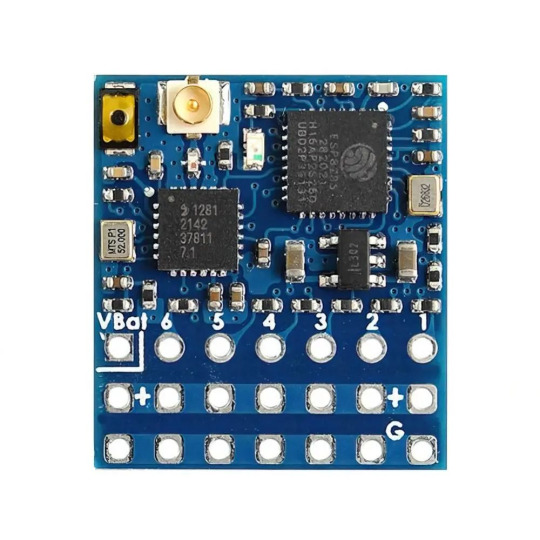
Understanding the Role of Flight Controllers
The flight controller is a critical component of any quadcopter, responsible for interpreting user input and adjusting the speed of individual motors to achieve stable flight. It utilizes sensors such as gyroscopes, accelerometers, and barometers to constantly monitor the quadcopter's orientation and altitude, making rapid adjustments to keep it level and responsive during flight. A high-quality flight controller is essential for achieving smooth, precise maneuvers and ensuring a safe flying experience.
Key Features to Consider
When selecting a flight controller for your quadcopter, several key features should be taken into account to ensure compatibility and optimal performance. These include the number of motor outputs, support for different flight modes (such as stabilized, acro, and GPS-assisted modes), built-in safety features like failsafes and voltage monitoring, and compatibility with your chosen radio control system. Additionally, advanced features such as on-screen display (OSD) integration, telemetry support, and programmable inputs can further enhance the functionality of your quadcopter.
Types of Flight Controllers
Flight controllers for quadcopters come in various types, catering to different preferences and levels of expertise among enthusiasts. Some are designed for beginners and feature simplified setup procedures and automated flight modes, making them ideal for learning the basics of quadcopter flight. Others are geared towards advanced users and offer a wide range of customization options, allowing enthusiasts to fine-tune their quadcopters for optimal performance in racing, freestyle, or aerial photography applications.
Choosing the Right Flight Controller
The choice of flight controller depends on factors such as your skill level, intended use, and budget. Beginners may opt for entry-level flight controllers with intuitive setup processes and stability-assist features, while experienced pilots may prefer more advanced controllers with customizable firmware options and support for specialized flight modes. It's essential to research and compare different options to find the flight controller that best meets your specific needs and preferences.
Caption for RC Mumbai Store: Soar to New Heights with Our Selection of Flight Controllers
Get more - flight controller for quadcopter
Conclusion
In conclusion, the flight controller plays a crucial role in determining the performance and capabilities of a quadcopter. Whether you're a beginner looking to learn the basics of quadcopter flight or an experienced pilot seeking to push the limits of aerial acrobatics, choosing the right flight controller is essential for achieving optimal stability, maneuverability, and overall flying experience. With a wide range of options available to suit every skill level and budget, enthusiasts can elevate their aerial adventures to new heights by selecting the perfect flight controller for their quadcopter
0 notes
Text
Introduction: Model rocketry can be an exciting and educational hobby that allows you to explore the basic principles of rocket science. Building, launching, and recovering a model rocket can be a thrilling and rewarding experience. However, it is important to ensure that rocket launches and landings are safe and well-controlled. One way to achieve this is by using a model rocket parachute and an altimeter. A model rocket parachute altimeter is an electronic gadget that measures the altitude of your rocket during flight and triggers the parachute release at a preset altitude. By doing so, it enables a safe and stable descent and landing of the rocket. In this article, we'll take a closer look at what a model rocket parachute altimeter is, how it works, and how to use one in your model rocketry endeavors. What is a model rocket parachute altimeter? A model rocket parachute altimeter is an electronic device that uses sensors to measure the altitude of a rocket during flight. It can be programmed to deploy a parachute at a specific altitude, typically between 100 and 1,000 feet, depending on the size and weight of the rocket. It is designed to ensure that the rocket lands safely and gently, reducing the risk of damage or loss. How does it work? Model rocket parachute altimeters work by using a barometric sensor to measure changes in air pressure as the rocket ascends. They also incorporate an accelerometer that detects sudden changes in the rocket's speed and direction. These sensors work together to provide accurate altitude readings and trigger the parachute deployment at the desired altitude. The device also includes a microcontroller that processes the sensor data and controls the parachute deployment mechanism. Most altimeters have a programmable feature that allows you to set the deployment altitude and descent rate of the parachute. Additionally, some advanced model rocket parachute altimeters have the onboard memory that records the altitude and speed data during the entire flight, which can be analyzed later. How to use a model rocket parachute altimeter? Before using a model rocket parachute altimeter, make sure that you have read and understood the manufacturer's instructions. Here are the general steps for using a model rocket parachute altimeter: 1. Assemble the rocket: Follow the instructions to build or prepare your model rocket for flight. Make sure that the parachute and the altimeter are properly installed and secured. 2. Program the altitude: Use the programming instructions provided by the altimeter manufacturer to set the desired deployment altitude. 3. Arm the altimeter: Turn on the altimeter and make sure that it has a clear line of sight to the sky. Most models have LED indicators that signal when the device is armed and ready to launch. 4. Launch the rocket: Follow the safety guidelines for launching your rocket. Once the rocket is in the air, the altimeter will start measuring the altitude and speed data. 5. Parachute deployment: When the rocket reaches the programmed altitude, the altimeter triggers the parachute deployment mechanism, and the rocket begins its descent. Make sure to have a clear and safe landing zone. FAQs: Q: Do I need a model rocket parachute altimeter? A: It is not mandatory, but it is highly recommended. Using a model rocket parachute altimeter increases the safety and success rate of your model rocket launches. Q: How high can a model rocket go with a parachute? A: It depends on the size, weight, and power of the rocket. Generally, model rockets with parachutes can reach altitudes of up to 3,000 feet or higher. Q: Can I reuse the parachute after deployment? A: Yes, most parachutes are reusable after deployment. However, check the parachute for any damages or tears before reusing it. Q: Are model rocket parachute altimeters expensive? A: The price of a model rocket parachute altimeter can range from $20 to $200 or more, depending on the features and complexity of the device.
Conclusion: A model rocket parachute altimeter is an essential gadget for any model rocket enthusiast. It enhances the safety and success rate of your launches, making the whole experience more enjoyable and less risky. With the proper knowledge and instructions, using a model rocket parachute altimeter can be easy and rewarding. Always follow the safety guidelines and have fun exploring the wonders of rocket science. Images: [Insert three images: An assembled model rocket with a parachute and an altimeter installed; A close-up of a model rocket parachute altimeter device; A model rocket descending with a deployed parachute] If you have any questions or comments Please contact us on our contact page or via our Facebook page. #model #rocket #parachute #altimeter
0 notes
Text
Global defense gyroscopes market reports
Accelerometers, computers, and gyros are used by contemporary inertial navigation systems to calculate a ship's, airplane's, or other vehicle's position. For integration into these systems, RLGs are perfect. The accuracy, stability, and small size of RLGs are advantageous to these systems. Fiber optic gyroscopes also employ light interference to measure mechanical rotation. The two halves of a split beam are carried in opposition to one another by a coil of fiber optic wire up to 5 km in length. It utilizes the Sagnac effect, just as a ring laser gyroscope. Tiny gyroscopes called microelectromechanical systems (MEMS) gyroscopes are commonly seen in electrical gadgets.
The concept of the Foucault pendulum is included in the vibrating component. This kind of gyroscope was first used in the military, but it is now more frequently seen in industry. High-performance motion sensing is useful in a number of sectors with challenging environments. Inertial measurement units (IMU), inertial navigation systems (INS), and other systems based on high-performance accelerometers and gyroscopes have long been used for critical navigation, flight control, and stabilization tasks, especially when GNSS and GPS signals are lost or unavailable.
Important Elements Driving the Defence Gyroscope Market's Growth:
The Global defense gyroscopes market reports will expand due to rising demand for a range of defense platforms. Precision guided weapons and missiles, as well as aerial, naval, and land-based platforms, all use gyroscopes in their defense systems. Because of programmes for modernization, maintenance, and procurement, there is a growing need for all of these platforms.
Factors Affecting the Defence Gyroscope Market's Growth:
Optical gyroscopes monitor the difference in propagation times between counter-propagating beams moving in opposing directions using closed or open optical pathways, defense gyroscope industry trends. Defense gyroscope market trends state that the counter-propagating light beams exhibit a phase difference as a result of a variation in path lengths brought on by rotation. This rotation-induced phase difference is caused by the Sagnac phenomenon, which forms the physical foundation of all optical gyroscopes. Innovations in optical and MEMS gyroscopes will impact the growth of the defense gyroscope industry.
The Defence Gyroscope Market: Outlook and Trends:
Projection for the market for defense gyroscopes, Growing defense spending will be the driving force behind new procurement activities. Market study on defense gyroscopes indicates that the geopolitical environment in Europe and Asia Pacific will also have an impact on the procurement process. Cross-border aggression will lead to more procurement of gyroscope-using platforms, according to market research on defense gyroscopes. Most of the increase will come from the Asia Pacific and Europe regions.
Examination of Recent Developments in the Defence Gyroscope Market:
Defense Gyroscope Market reports that Boeing has begun equipping two F-15E aircraft of the United States Air Force with a digital avionics system made by BAE Systems modernize the electronic warfare system. According to a statement made by Boeing on Thursday, the two companies will assist in installing the Eagle Passive Active Warning and Survivability System on a total of 43 aircraft units. This system will replace the fleet's current analogue technology-based EW self-protection suite. The USAF awarded the aircraft manufacturer a $79.6 million sole source contract to facilitate the low-rate start-up of EPAWSS production. A change to expand the scope of work for $189.3 million was just released by USAF.
0 notes
Text
Initial Investigation - Alternate controllers
Motion and Full Body:
XR/VR/AR Controllers: These controllers are designed for immersive virtual, augmented, or mixed reality experiences. They often include motion tracking sensors and buttons. For example, the Oculus Touch controllers are equipped with thumbsticks, triggers, and capacitive sensors to detect finger movements. Popular game: "Beat Saber" where players wield lightsabers to slice through oncoming blocks to the beat of music.

Motion Controllers (Nintendo Switch or Wii): These controllers use motion sensors, accelerometers, and infrared technology to detect their position and orientation. In the case of the Nintendo Switch Joy-Cons, they can be attached to the Switch console or used independently. The movements of the player's hands are translated into in-game actions. The "Splatoon" series for the Switch allows players to aim their weapon by physically moving the Switch.

Xbox Kinect: The Kinect uses a depth-sensing camera and a microphone array to track the player's movements and voice. It can detect gestures, body position, and voice commands, enabling players to control games and applications without a physical controller. An example of this is "Dance Central" where players dance and mimic on-screen dance moves.

Handheld:
Mobile games with Gyro controls: Gyro controls rely on the gyroscope sensor in a mobile device to track its orientation and movements. Players can tilt or rotate the device to control in-game actions. A popular example is "Asphalt 9" where players tilt their smartphones to steer their vehicles in high-speed races.

Playdate - Crank operated games: The Playdate's unique feature is the crank located on the side of the device. Game developers can use this crank for various in-game actions. Cranking it clockwise, for instance, might move a character forward. For example "Crankin's Time Travel Adventure" allows players to control the character's time travel using the crank.
youtube
Nintendo DS - Dual Screens: The Nintendo DS features a stylus and a touch screen on the lower display, allowing players to interact with in-game elements directly. The upper screen displays the game's primary action. A popular game is "The Legend of Zelda: Phantom Hourglass" where players use the stylus to navigate and solve puzzles.
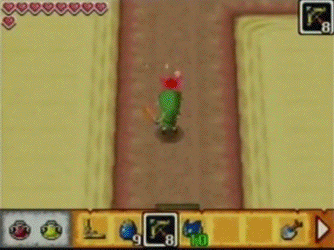
Game Specific:
Guitar Hero: The Guitar Hero controller consists of a neck with fret buttons and a strum bar. Players press the fret buttons and strum to match on-screen notes and rhythms.

Donkey Kong Bongos: These controllers are equipped with pressure-sensitive pads that detect claps and drumming. Players clap or drum to control in-game actions.
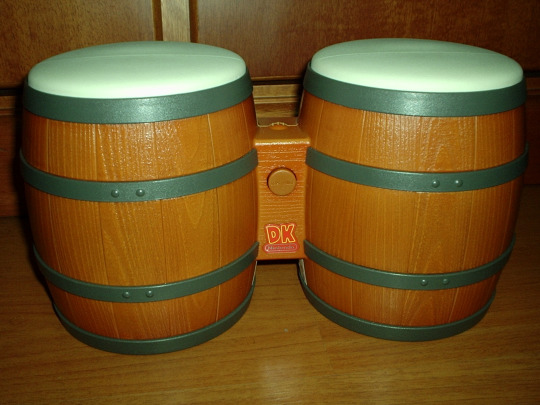
Buzz/Scene It (Xbox): These controllers are buzzers with buttons. Players use these to buzz in and answer trivia questions during quiz games.
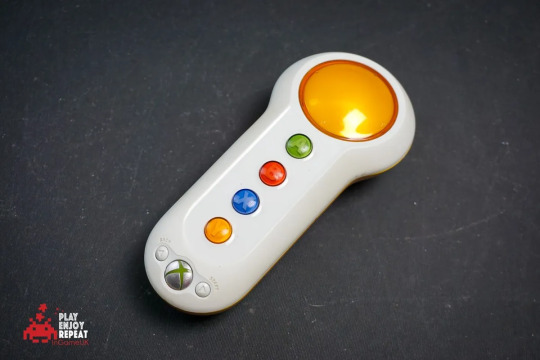
Dreamcast Sega Bass Fishing remote: This fishing controller resembles a fishing rod. Players reel in and cast their lines, mimicking real fishing actions in the game.

Pro-Gaming:
Pro-Gaming Pads - Custom Set-ups: Pro-gaming pads and custom set-ups are prevalent in professional esports, especially in games like first-person shooters (FPS) and real-time strategy (RTS). Players often use customized controllers, featuring programmable buttons, increased sensitivity, and ergonomic designs for quick and precise actions. Popular games in this realm include titles like "Call of Duty," "Counter-Strike: Global Offensive," and "StarCraft II." The custom set-ups are tailored to individual player preferences, allowing for optimal performance in competitive gaming environments.
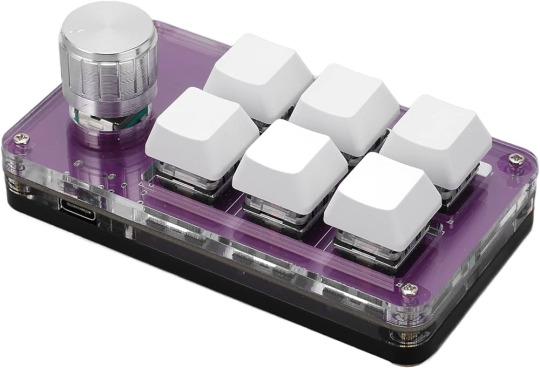
Joysticks: Joysticks have a rich history in gaming, especially in flight simulation and space combat games. Titles like "Microsoft Flight Simulator" and "Elite Dangerous" benefit from the precision and immersive control that joysticks offer. The unique range of motion allows players to maneuver aircraft and spacecraft with greater accuracy than traditional controllers. Joysticks are favored by enthusiasts seeking a more realistic and engaging gaming experience.

Steering Wheels/Rigs: Steering wheels and rigs are synonymous with racing simulations, offering a more immersive and realistic driving experience. Games like "Gran Turismo," "Forza Motorsport," and "Assetto Corsa" are popular titles where steering wheels are widely used. The force feedback and responsive controls provide a heightened sense of control and engagement, making them essential for serious racing game enthusiasts.

Retro:
Menacer (Sega Megadrive): The Menacer was a light gun for the Sega Megadrive, used primarily for games like "Lethal Enforcers" and "Body Count." It allowed players to aim and shoot on-screen targets, providing an arcade-like experience at home.
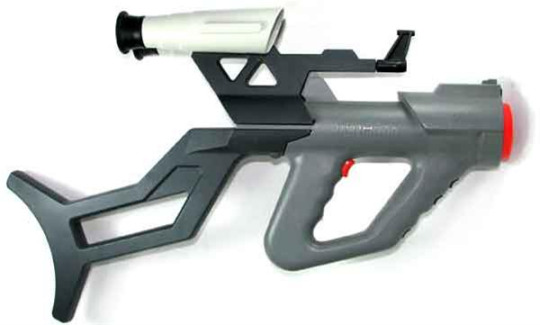
Zapper (NES): The Zapper was a light gun accessory for the NES, used prominently in games like "Duck Hunt." It relied on light sensing technology to register hits on targets, providing a unique and enjoyable gameplay experience.

Power Glove (NES): The Power Glove was a motion controller for the NES, attempting to translate hand movements into on-screen actions. While not widely successful, it remains an iconic piece of gaming history.
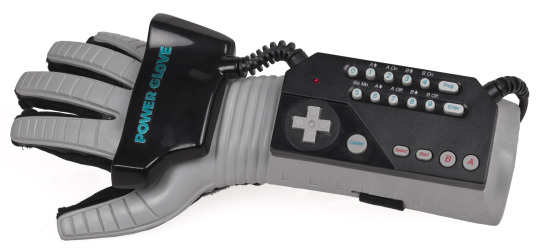
Jaguar (Atari): The Atari Jaguar featured a unique controller with a numeric keypad, designed to accommodate a variety of game genres. It was used for games like "Alien vs. Predator" and "Tempest 2000."
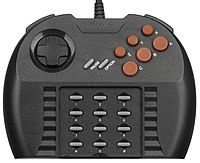
Arcade Games:
Racing Games: Arcade racing games, both traditional and unique, often use specialized controls such as steering wheels, pedals, and gear shifts. Classic titles like "Out Run" and modern adaptations like "Mario Kart Arcade GP" offer players a dynamic and immersive racing experience.
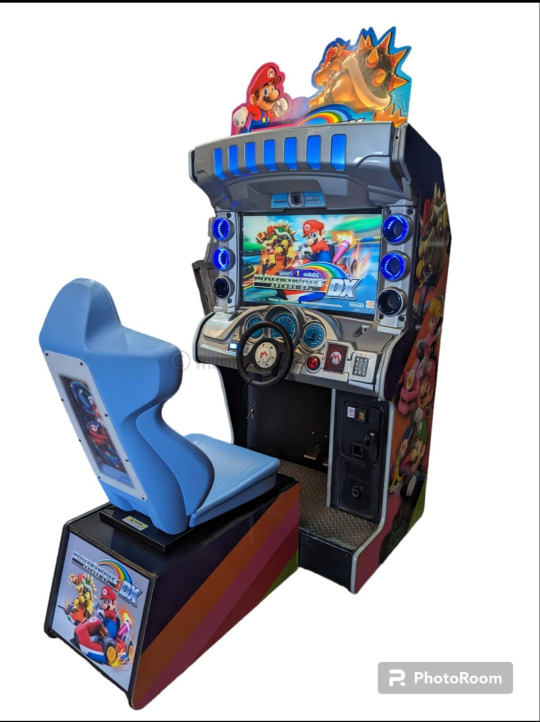
Gun Games: Arcade gun games like "Time Crisis," "House of the Dead," and "Terminator Salvation" utilize light guns, providing players with a realistic shooting experience. Unique features include reloading mechanics, cover systems, and force feedback, enhancing the arcade shooter experience.

Dance Dance Revolution: "Dance Dance Revolution" is a popular rhythm game that uses a dance pad. Players step on directional arrows in time with the music, offering a physically engaging and entertaining gameplay experience.

Tabletop and Physical Games:
Board Games: Board games encompass a vast range of genres, from classic titles like "Monopoly" and "Scrabble" to modern strategy games like "Catan" and "Ticket to Ride." These games often involve a combination of cards, dice, and tokens, providing a tactile and social gaming experience.

Card Games: Card games, whether traditional like "Poker" or modern deck-building games like "Dominion," rely on strategic play and often involve social interaction. They are versatile and enjoyed by players of all ages.

RPG’s (Dungeons & Dragons): Role-playing games (RPGs) like "Dungeons & Dragons" (D&D) involve a combination of storytelling, dice rolling, and character development. Players use rulebooks, character sheets, and dice to navigate imaginary worlds and embark on epic adventures.

LARP’ing: Live-action role-playing (LARPing) takes gaming into the real world, where participants physically portray characters and engage in a shared narrative. LARPing often involves costumes, props, and immersive environments, blurring the lines between tabletop gaming and theatrical performance.

Fairground Games:
Coconut Shy: Traditional fairground games like Coconut Shy challenge players' skills in a carnival setting. Players attempt to knock over coconuts with thrown balls, showcasing a mix of precision and luck.

Other:
Quiz Games - Jackbox Games: Jackbox Games revolutionized party gaming by using mobile devices as controllers. Games like "Quiplash" and "Fibbage" involve answering trivia and creating humorous responses, making them accessible and entertaining for diverse player groups.

Dragon Quest's Nintendo Switch Slime Controller: The Nintendo Switch Slime Controller, inspired by the "Dragon Quest" series, features a unique design resembling the iconic Slime monster. While not altering gameplay mechanics, it adds a thematic and playful element to the gaming experience.

Now Play This – A Festival of Experimental Game Design: "Now Play This" is a festival that showcases experimental and unconventional game designs, pushing the boundaries of traditional gaming

Alternative controllers are not just a means to diversify gameplay experiences; they are powerful tools in fostering inclusivity within the gaming community. These controllers, whether they involve motion sensing, unique peripherals, or adaptive input devices, offer a pathway for individuals with disabilities to engage in the world of gaming. They redefine the boundaries of accessibility, making it possible for gamers of all abilities to participate fully and experience the joy of interactive entertainment. By tailoring gameplay experiences to different needs, alternative controllers play a pivotal role in ensuring that gaming transcends physical limitations, allowing everyone to share in the immersive and rewarding world of video games.
0 notes
Text
What is native Android app development?
The process of developing software applications especially made to run on certain platforms and devices while utilizing all of those devices' native features and capabilities is known as native app development. Although native apps can be created for a variety of platforms, such as desktops, smart TVs, and other gadgets, the phrase is most frequently linked to the creation of mobile apps, especially for smartphones. Ftechiz Solutions Pvt Ltd as an Android app development company offering best android app development services.
To improve comprehension even more, consider the following important points:
1. Platform-Specific Development: Native app development entails modifying an application so that it runs without a hitch on a particular device (such as an iPhone or Samsung Galaxy) or operating system (such as iOS or Android). Every platform has an own set of development environments, programming languages, and tools.
2. Optimized Performance: Because of their development, native apps are renowned for offering excellent responsiveness and performance.
3. Deep Access to Device Features: Native applications can leverage the device's camera, GPS, accelerometer, and push notification systems. This makes it possible for programmers to design apps that seamlessly incorporate and make use of these features, improving the user experience.
4. Native User Interface (UI): Platform-specific UI components are usually used in native apps to ensure that the interface of the app smoothly blends in with the operating system's appearance and feel. This makes the experience easier to use and more intuitive.
5. Offline Functionality: Native applications frequently provide offline functionality, letting user’s access specific features or information even when they are not online. This is especially advantageous for apps that contain essential features or content that users might require in a variety of circumstances.
#Android app development company#Android App Development Services#best android app development company
0 notes